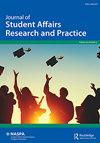利用脑电图数据检测眼球运动
IF 0.8
Q3 EDUCATION & EDUCATIONAL RESEARCH
Journal of Student Affairs Research and Practice
Pub Date : 2023-05-31
DOI:10.47611/jsrhs.v12i2.4231
引用次数: 0
摘要
在本文中,我们证明了使用机器学习使用EEG数据来检测眼球运动是可能的。通过脑电图结果识别眼球运动,我们的目标是帮助残疾人更好地控制物体运动和独立进行日常活动。这一点尤其重要,因为许多残疾人依靠他人的帮助来满足他们的日常需求,这对提供帮助的人来说可能是负担。为了实现这些目标,我们使用来自Kaggle的眼状态分类数据集训练了不同的机器学习模型。我们对结果进行了分析,以评估KNN (K近邻)模型的准确性。该模型对患者眼球运动的检测准确率达到95.23%。这些发现表明,该模型可以在未来有效地利用,并进一步研究以帮助残疾人。总之,我们的研究表明,通过脑电图结果可靠地识别眼球运动是可能的。在这一领域的进一步研究可以为手眼协调能力差的人提供更有效和个性化的干预措施。本文章由计算机程序翻译,如有差异,请以英文原文为准。
Using EEG Data to Detect Eye Movement
In this paper, we show that it is possible to use EEG data to detect eye movement using machine learning. By recognizing eye movement through EEG results, our goal is to help individuals with disabilities better control object movement and perform daily activities independently. This is especially important as many disabled individuals rely on assistance from others for their daily needs, which can be burdensome for the person providing help. To achieve these objectives, we trained different machine learning models using a data set of eye-state classification from Kaggle. We analyzed the results to assess the accuracy of a KNN (K Nearest Neighbors) model. With the model achieved an accuracy of 95.23% in detecting eye movement in patients. These findings suggest that the model could be effectively utilized in the future, with further research to assist individuals with disabilities. Overall, our research suggests that it is possible to recognize eye movement through EEG results reliably. Further research in this area could lead to the development of more effective and personalized interventions for individuals with poor hand-eye coordination.
求助全文
通过发布文献求助,成功后即可免费获取论文全文。
去求助
来源期刊

Journal of Student Affairs Research and Practice
EDUCATION & EDUCATIONAL RESEARCH-
CiteScore
2.40
自引率
9.10%
发文量
50
期刊介绍:
The vision of the Journal of Student Affairs Research and Practice (JSARP) is to publish the most rigorous, relevant, and well-respected research and practice making a difference in student affairs practice. JSARP especially encourages manuscripts that are unconventional in nature and that engage in methodological and epistemological extensions that transcend the boundaries of traditional research inquiries.
 求助内容:
求助内容: 应助结果提醒方式:
应助结果提醒方式:


